
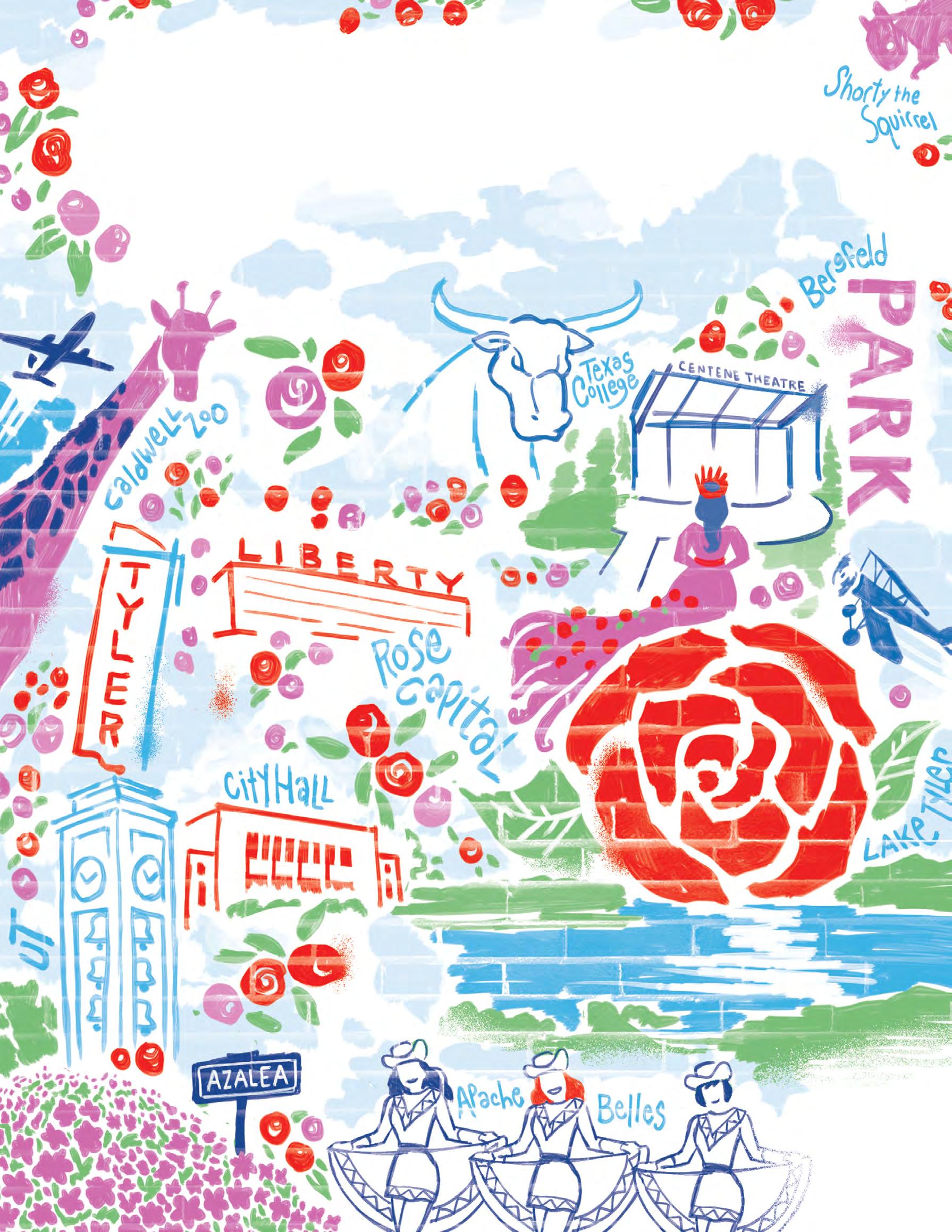




















As we look back on the past year and ahead to the future, one thing remains clear: All of Tyler is at the heart of everything we do. This commitment drives our investments in infrastructure, public safety, economic growth, and quality of life—ensuring that every part of our city thrives.
Through responsible financial planning, we continue to maintain the lowest property tax rate for a city with a population over 10,000 in Texas while reinvesting in the services that make Tyler stronger. From vital upgrades to our water and sewer systems to improved roads, public safety enhancements, and downtown revitalization, we are building a more resilient city that meets today’s needs and prepares for tomorrow’s opportunities.
However, true progress is not just about infrastructure—it’s about people. Tyler’s success is built on collaboration between our City staff, businesses, and our residents who make this community great. Every achievement is a result of teamwork, shared ideas, and a unified vision for the future.
As we move forward, we invite you to stay engaged, share your ideas, and help shape the future of our city. Thank you for your continued support and commitment to making Tyler a place of innovation, opportunity, and shared success.
to
Edward Broussard City Manager | City of Tyler, Texas

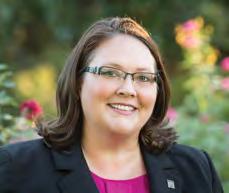

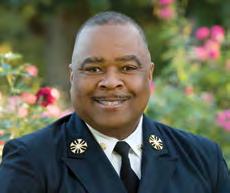


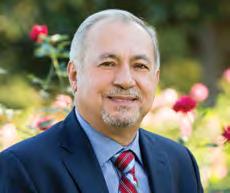






District 4 Councilmember James Wynne, District 2 Councilmember Petra Hawkins, District 1 Councilmember Stuart Hene, Mayor Don Warren, District 3 Councilmember Shirley McKellar, District 5 Councilmember Lloyd Nichols, and District 6 Councilmember Brad Curtis.
DISTRICT 1 CENTRAL
District 1 is located between Old Jacksonville Highway and South Broadway Avenue in the southern part of the city. It is home to several miles of hiking and biking trails, including those at Faulkner Park and the Legacy Trails trailhead.
DISTRICT 2 WEST
District 2 is located on the west side of Old Jacksonville Highway between Districts 1 and 3, and includes the annexed Tyler Pounds Regional Airport. It is home to Tyler’s burgeoning tech sector and our vibrant downtown entertainment district.
DISTRICT 3 NO rTHWEST
District 3 is located on the northwestern bounds of the city limits. Rich in history, it is home to the Texas College campus: the oldest institution of higher education in Tyler.
DISTRICT 4 NO rTHEAST
District 4 is located on the northeastern side of Tyler between McDonald Road and East Gentry Parkway. It is home to Tyler’s historic Azalea District, Bergfeld Park and Amphitheater, Brick Street Village, and Hillside Park.
DISTRICT 5 EAST
District 5 is located south of McDonald Road and east of Paluxy Drive. It houses both The University of Texas at Tyler and Tyler Junior College, which bring more than 10,000 students to Tyler annually.
DISTRICT 6 SOUTH
District 6 is located between Paluxy Drive and South Broadway Avenue. It is home to the Village at Cumberland Park shopping Center. It houses the popular Pollard Park, Southside Park, and Rose Rudman Recreational Trail, one of the most utilized trails in Tyler.





The Texas Municipal Library Directors Association awarded the Tyler Public Library the Achievements of Library Excellence Award for 2024, placing it among the top 19% of public libraries in Texas!
This award recognizes outstanding service, innovation, and community impact—qualities the Tyler Public Library embodies through its many programs. From early literacy and digital skills training to job development and cultural events, the Library provides valuable resources for residents of all ages. Its partnerships with local organizations and outreach efforts to underserved groups further strengthen its role as a key community hub.
Out of 542 public libraries in Texas, only 102 received this honor, underscoring Tyler’s commitment to lifelong learning and community engagement.
City Manager Ed Broussard praised the achievement, saying, “We are honored to receive this award. It reflects the dedication of our incredible staff and the vital role libraries play in enriching lives.”
This prestigious honor, inspires us to keep striving for excellence as we grow and adapt to meet the needs of All of Tyler.
•
•
•
•
•

DESIGNATIONS
• Veteran-Friendly Community by East Texas Council of Governments
• Tourism Friendly Texas Certified Community by Travel Texas
BUDGET 101: Water, wastewater, and solid waste system improvements fall under enterprise funds, which are self-supported through customer fees. These fees go directly toward maintaining and improving these services rather than relying on tax revenue.

•
•
•

• Brew City, Texas Community by Texas Craft Brewers Guild
BEST CITY
• #1 in 2024 Best City to Move to in Texas by USA Today
• #1 in 2024 Top Places to Retire by USA Today
• #5 in Best Cities for Pets by Rent.com
• #9 in 10 Best Cities to Retire in Texas by Retirement Living Journal
• #11 in Top 25 places to live in Southwest by Livability.com
FINANCE
• 38th Consecutive Certificate of Achievement Award for Excellence by the Government Finance Officers Association
• 17th Consecutive Distinguished Budget Presentation Award by the Government Finance Officers Association
COMMUNICATIONS
• Gold in Annual Report for “Tyler Transforming: Annual Report 2022-2023” by Hermes
• Gold in Documentary for “Tyler’s

DOWNTOWN




Public safety is the foundation of a thriving community, and Tyler residents can be assured the Tyler Fire Department is ready to answer the call to save lives and protect property.
Enhanced fire safety not only saves lives and structures—it can save our residents money. The Tyler Fire Department holds an Insurance Services Office (ISO) Class 1 rating, placing us among the top 1% of fire departments in the country. Improved insurance ratings in 2021 helped reduce premiums for residents and businesses, and with continued investment, we can ensure these benefits remain in place.
To maintain this high standard of service, we purchased two portable burn buildings to house specialized training for our firefighters. The total cost for both units was $129,713. The new burn buildings allow our firefighters to train locally in realistic conditions, simulating the smoke, heat, and fire growth they encounter in real emergencies. The two-chamber design mirrors actual fire scenarios—one space mimics a burning room’s intense heat and smoke, while the other simulates the origin and spread of a fire.
The buildings simulate “Class A” fires, which involve materials such as wood and other common combustibles. Nearly every structure fire, including residential homes and businesses, contain a Class A element.
This hands-on practice helps firefighters become familiar with fire behavior, improving response times and ensuring they are fully prepared for the challenges they will face in the field.
We also are preparing for the long-term needs of the department to ensure our firefighters have the equipment they need. This includes making long-term financial plans to secure a new fire engine and a ladder truck—an investment of $2.6 million—to strengthen our emergency response capabilities while also being fiscally responsible of your tax dollars.
We are locking in financing now to reduce overall costs and expect these vehicles to arrive in 38 to 40 months.
Reliable and modern fire apparatus are essential for maintaining response efficiency, ensuring our firefighters have the tools they need to protect lives and property across the city.
By prioritizing these improvements, we keep


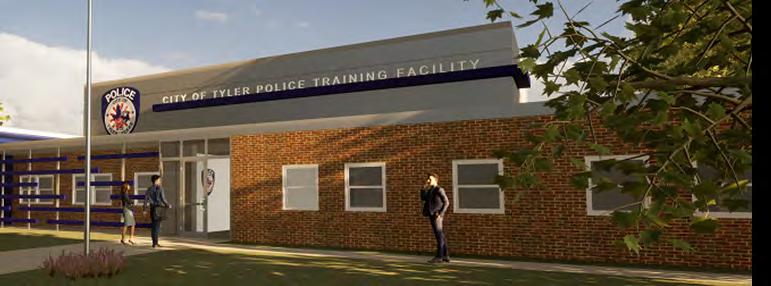


A safer Tyler starts with well-trained officers ready for anything. That’s why we are transforming the former National Guard Armory on East Commerce Street into a cutting-edge Regional Police Training Facility. The facility is being developed at a cost of $1.3 million, funded through the Half Cent Sales Tax Program.
The Tyler Police Department is already one of the best in the country, holding a CALEA Accreditation—an elite distinction achieved by only 3% of law enforcement agencies nationwide. With this new facility, we’re taking training to the next level. Instead of officers traveling between multiple locations, they will have classrooms, locker rooms, a gym, and specialized training areas all in one place. That means they can sharpen their skills more efficiently and return to serving our community faster.
However, the impact of this facility goes beyond city limits. The Tyler Police Department already hosts statewide training sessions, drawing attendees across Texas and other states. With the new facility, our department is expanding its role as a regional training provider, offering high-quality instruction and resources to agencies across East Texas.
We’re also investing in technology to improve safety and accountability. Through the AXON replacement program, our officers will continue to be equipped with state-of-the-art body cameras and tasers. This program is a continued investment in officer accountability, with funding dedicated to replacing and upgrading equipment citywide. That means more transparency in policing and better protection for both officers and the community.
And as our downtown continues to grow, we’re making sure safety grows with it. We’ve added two new officers to the downtown beat. These positions are being funded through federal grants and the Downtown Tax Increment Reinvestment Fund (TIRZ). A stronger police presence in our high-traffic areas means quicker response times, more proactive crime prevention, and a safer environment for businesses, residents, and visitors.
This investment is about making Tyler a place where families feel safe, businesses can thrive, and visitors can enjoy everything our city has to offer. When we invest in training, technology, and community-focused policing, we’re investing in a future where safety isn’t just a goal — it’s a guarantee.





We know that increased traffic is one of our biggest challenges. To keep up with the demands of a growing population and thriving businesses, we conducted the South Tyler Mobility Study to identify key projects that will reduce congestion, increase connectivity, and improve mobility across the city.
The study outlines short-term, mid-term, and long-term improvements to create a more efficient and accessible transportation network. Intersection upgrades, new roadways, and expanded connectivity will provide alternate routes and reduce pressure on major thoroughfares, making it easier for residents and businesses to get where they need to go.
We evaluated seven key corridors in South Tyler and identified nine strategic projects designed to make it easier for everyone to move around the city. These improvements will reduce commute times, create safer roadways, and give drivers, cyclists, and pedestrians more options.
One way we’re targeting traffic congestion is by proposing the Waljim Street Connector, a 500-foot link between South Town Drive and Thigpen Drive. This would provide an alternate route between Grande Boulevard and Cumberland Road, which means fewer drivers on Broadway Avenue.
We’re also proposing two expansions for Waljim Street to the north and south of the roadway to give drivers more options in the area. This includes a 0.7-mile extension of Waljim Street North from Grande Boulevard to Sword Waldie Way, including a bridge over West Mud Creek, and a new roundabout to improve traffic flow. The proposed Waljim Street South extension would add another mile from Heritage Drive to Cumberland Road, connecting to Deer Ridge Lane, further relieving congestion on nearby roads.
Another project is the 0.6-mile extension of Market Square Boulevard from Cumberland Road to South Broadway Avenue. This project would include a new traffic signal at Cumberland and improved intersections to handle increased traffic.
Also proposed is a two-mile extension of New Copeland Road from Grande Boulevard to Paluxy Drive. This includes a bridge over Shackleford Creek, new sidewalks and bike lanes, and improved intersections to support smoother traffic flow.
PROPOSED PROJECTS WOULD EXPAND CONNECTIVITY ACROSS SOUTH TYLER:
• Marsh Farm Road | A one-mile extension from Friedlander Way to FM 756 with sidewalks, bike lanes, and better intersections.
• Cherryhill Drive | A 0.5-mile extension to West Cumberland Road to provide another east-west route.
• Centennial Parkway | A 1.75-mile extension to Paluxy Drive, including a bridge over Shackleford Creek.
• Hollytree Drive | A one-mile extension to Legacy Boulevard with a pedestrian bridge and protected trail crossing. The time frame of these projects is yet to be determined and depends on many variables including funding and development. Short-term improvements could happen within two-years with long-term improvements phased in over the next decade. By strategically investing in South Tyler’s transportation infrastructure, we are creating a more efficient, safer, and connected future for all residents and businesses.


With more businesses opening in South Tyler, we are building a new road to growth and connection for our community. The $1.7 million investment to build the previously planned Settler’s Landing Drive, soon known as Bass Pro Way, will link South Broadway Avenue to Cumberland Village and Centennial Drive, providing better connectivity. Smoother traffic flow and better access mean more than convenience — it means more opportunities for local businesses, increased tourism, and a stronger, more connected Tyler.










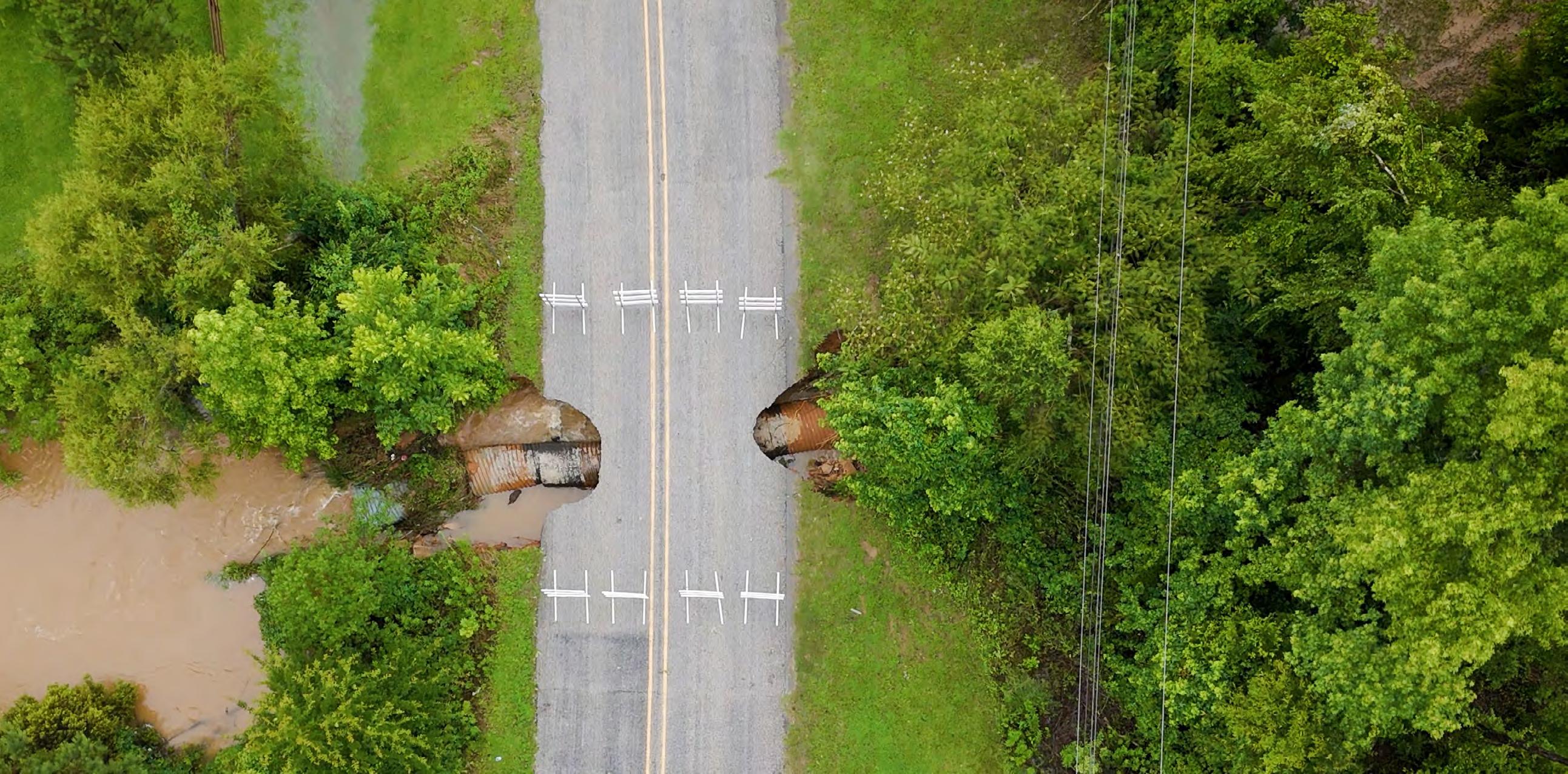

When heavy rains roll through Tyler, our stormwater system works hard behind the scenes to keep our streets clear and our neighborhoods safe. Managing stormwater and preventing erosion isn’t just about infrastructure, it is also about protecting Tyler’s homes and businesses. We are committed to improving drainage and stabilizing our waterways to reduce flooding and erosion, protect public infrastructure, and enhance the overall health of our environment.
Quick action saved a Tyler roadway when it was needed after a culvert collapsed on Jeff Davis Drive. The Streets Department quickly diverted drivers away from the area and made repairs in record time — ensuring the safety of travelers and residents in the area. Additional work was done to fix the root cause of the collapse from water flowing over the roadway.
We have made a noticeable difference in keeping Tyler dry during severe rain events through noteworthy stormwater projects. Upgrades on South Thompson Avenue improved drainage and lowered the chance of flooding. The Stagecoach Drainage project stopped erosion and road damage by fixing how water moves through the area. Over on the Northwest Loop, we assisted with a privately financed project to replace a 60-inch storm main near Studio 6 and the abandoned OYO Hotel to prevent flooding over the roadway. Plus, we have completed other drainage repairs and improvements identified in the Half Cent Annual Work Plan to increase the capacity of our drainage system.
Efforts are now underway at West Mud Creek to tackle erosion along Tributary A near Glenwood Church of Christ, a known hot spot during heavy rain. We are strengthening the creek banks by adding rock baskets, turf mats, and large stones to stop the soil from washing away. We are also fixing stormwater outfalls, where water drains out, to improve water flow and help prevent flooding downstream. This project will protect neighborhoods from damage and clean the creek’s water.

We are also working to upsize drainage along Keaton Avenue by installing concrete boxes to guide stormwater and widening the channel from Shepherd Lane to Wynwood Drive. This will allow the system to divert more rainwater. While the road is open to install reinforced concrete boxes, utility crews will be hard at work alongside the street crews.
Every stormwater project is an investment in Tyler’s future. We are improving our drainage system, lowering the risk of flooding and protecting your property.






Tyler Water Utilities (TWU) is working to improve our resident’s drinking water experience by analyzing best industry standards for filtration.
While the city’s water currently meets or exceeds all federal and state safety-quality standards, feedback from residents has prompted a study to evaluate methods to refine treatment processes and lay the groundwork for future improvements.
Earlier this year, phase two of the Taste and Odor Study began with the delivery of a set of a bank of filters designed to test different methods for removing a naturally occurring compound responsible for the “earthy” taste and smell in water sourced from Lake Palestine. Though this compound is harmless, TWU sees improving the drinking experience as an important priority to our community.
A final report is expected in Spring 2026 and will outline recommendations for long-term solutions to enhance water quality for All of Tyler. It also will provide critical insights to guide the planned expansion of the Lake Palestine Water Treatment Plant.
Our goal is that Tyler residents can raise their glasses, confident that what’s inside is as refreshing to taste as it is safe to drink.






TWU is a service to the public, and every initiative is done with people first in mind.
Putting people first means showing up—and this year, TWU did just that by taking our message on the road through a new series of community meetings focused on water billing, meter replacements, and infrastructure improvements.
Hosted by City Council members in their districts, these meetings provided space for residents to connect with subject matter experts. These one-on-one conversations gave our community deeper insights into billing and water consumption, while also highlighting our commitment to hearing and addressing individual concerns.
A key focus was gathering input on a clearer, more user-friendly utility bill design and hearing resident feedback on how to better communicate new projects, updates, and utility information.
This type of outreach was a first for TWU, and it received a warm reception from people who were able to ask direct questions and put a face to the dedicated professionals who work behind the scenes to keep this valuable resource flowing. Randy Carter, a District 3 resident, said the meetings help the individual and community overall gain a better understanding of processes.
His feedback echoed others across the city – where All feedback is welcomed.
We are expediting the replacement of water meters as part of a systemwide upgrade to improve consistency in reporting and billing.
To date, the department has replaced more than 70% of the identified 11,000 water meters that had issues with either consistently reporting water usage or lost the ability to connect to our system to relay usage information. So far, about 8,000 meters have been replaced.
The replacement units are wired with advanced communication technology that allows the city to consistently and securely read usage remotely without having to access each individual meter housed inside meter boxes in the ground.
The project is scheduled to be complete in December and is partially funded through American Rescue Plan Act (ARPA) funds. TWU budgets for meter replacements annually, but these federal funds enabled TWU to eliminate its backlog. ARPA funds paid for most of the $3.45 million project, with an additional $1 million allocated during the 2025 budget process to bring the total number of meter installations to 11,000.
Going forward, we will continue to replace meters on its annual rotation, installing ones with this advanced technology.







WATER PRESSURE GETS A BOOST
We are investing in projects to reduce stress on the distribution system during peak demand. These projects will improve water pressure for residents and support future growth.
Planning for a new elevated water storage tank is underway near Texas Highway 155 and Earl Campbell Parkway. With a capacity of up to 2 million gallons, this tank will provide critical support when our community needs it most. The engineering for the new elevated tank cost $1.8 million and construction is expected to be completed in fall 2027. This new infrastructure will help ensure safe, dependable water service.
This $1.8 million project includes structural upgrades that will work in tandem with the new tank to maintain system pressure and provide a capacity buffer during periods of peak demand.
These upgrades are part of a larger initiative to ensure all Tyler residents have quality water pressure when they need it. Beyond storage improvements, we are also upgrading aging water mains across the city. By replacing undersized pipes with larger, modern water lines, we improve water flow, reduce service disruptions, and enhance fire protection.
With these investments, Tyler Water Utilities is boosting a strong, sustainable system that supports our growing community.


Downtown will see improvements to its wastewater system this year as part of the city’s ongoing efforts to upgrade and maintain Tyler’s sewer system – including its 718 miles of sewer mains, more than 11,000 manholes and 22 lift stations.
The project is part of an agreement with the EPA, known as a Consent Decree. The agreement outlines initiatives to enhance capacity and mitigate overflow problems. The city is in its ninth year of its long-range plan to upgrade its system and expects to meet the deadlines outlined in the decree by spring 2027.
In February, the City Council invested $28.2 million into the downtown area, to add more than 18,000 linear feet of sanitary sewer line between Martin Luther King Jr. Boulevard and Bryan Street. The pipes will be replaced with new lines ranging in size from 6 to 42 inches.
In 2024, we completed extensive assessments and improvements to our wastewater infrastructure, including:
• Installed 54 new sewer service connections
• Completed 35 city-led repairs and 267 contractor-led sewer main repairs
• Cleaned 275.9 miles of gravity mains
• Addressed 73 sewer stops and 14 private stops
• Completed 807 sewer service work orders
• Completed 97.8 miles of camera inspections to assess sewer line conditions
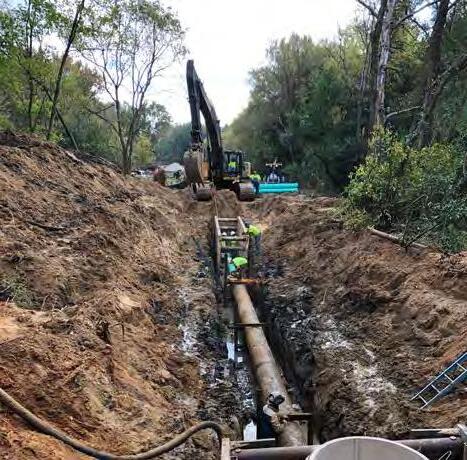

These efforts have paid dividends to residents and to the environment. Since the Consent Decree’s inception, the city has gone from an annual 15 reported wastewater discharges per 100 miles of sewer line to fewer than 8 per 100 miles.
We have been able to accomplish this feat by focusing on capacity improvements and proactive maintenance. TWU’s ongoing efforts to strengthen our wastewater infrastructure mean fewer overflows, faster service, and a more reliable system, helping to protect our homes, businesses, and environment.
We joined a national EPA initiative to evaluate underground water pipes and identify any made of outdated materials. The project evaluated the material each service line is composed of, identifying any remaining pipes containing lead or galvanized steel.
With this information, we are developing an extensive replacement plan to prioritize infrastructure upgrades and secure funding. The full report is due at the end of the year. To learn more, visit CityofTyler.org or scan the QR code below.
142
3,843
4,390



From revitalizing beloved spaces to creating new opportunities for connection, we are committed to enriching our parks. Through the development of Stewart Park and the transformation of W.E. Winters Park, Tyler Parks and Recreation is preserving history, expanding recreational opportunities, and strengthening our neighborhoods.
Once a cherished family home, Stewart Park will be our 29th park, marking the first time a new park has been added since September 2004. The nine-acre property, located along Frankston Highway (Texas Highway 155), was donated by T.B. and Gladys Stewart in 2012. It will be a welcoming community space with new playground equipment, a walking trail, pavilions, and a restroom. We’re investing $457,613 to shape the future of the park and reflect the spirit and legacy of the land.
Special care is being given to the original Stewart home, which T.B. Stewart built by hand. The home was a cornerstone of the St. Louis community, where the Stewarts championed education and service. Parts of the house will be repurposed into new features, ensuring a lasting tribute to the family. Stewart Park will also have an outdoor learning area with a small stage and seating for school presentations and community events. Informational signage will share the history of the Stewarts’ contributions to the St. Louis community and their dedication to education and service, giving visitors a deeper connection to the park’s legacy.
The park will also serve as a key trailhead for the Legacy Trail extension, a 12-foot-wide reinforced concrete multipurpose trail running through W.E. Winters Park and connecting to Peete Elementary School to seamlessly integrate the trail into Tyler’s growing network of outdoor spaces.
Just a short walk away, W.E. Winters Park has been a vital part of the community for generations. It recently underwent a transformation, the latest in the park’s history.
W.E. Winters Park was once a quarantine site during a smallpox outbreak in the late 1800s, later a dumpsite, and then Peach Park in 1968. The park was later renamed W.E. Winters after the beloved Peete Elementary principal, whose school is just one mile away.
The park’s recent facelift includes a new playground, restrooms, parking, and a pollinator-themed pavilion. This transformation has made W.E. Winters Park a vibrant destination for recreation and relaxation, with amenities designed to bring neighbors together and enhance outdoor experiences for Tyler residents.
We are committed to building parks that serve all residents through play and connection with nature. As we continue investing in our green spaces, we look forward to families enjoying the outdoors, honoring the past, and building a stronger community together.



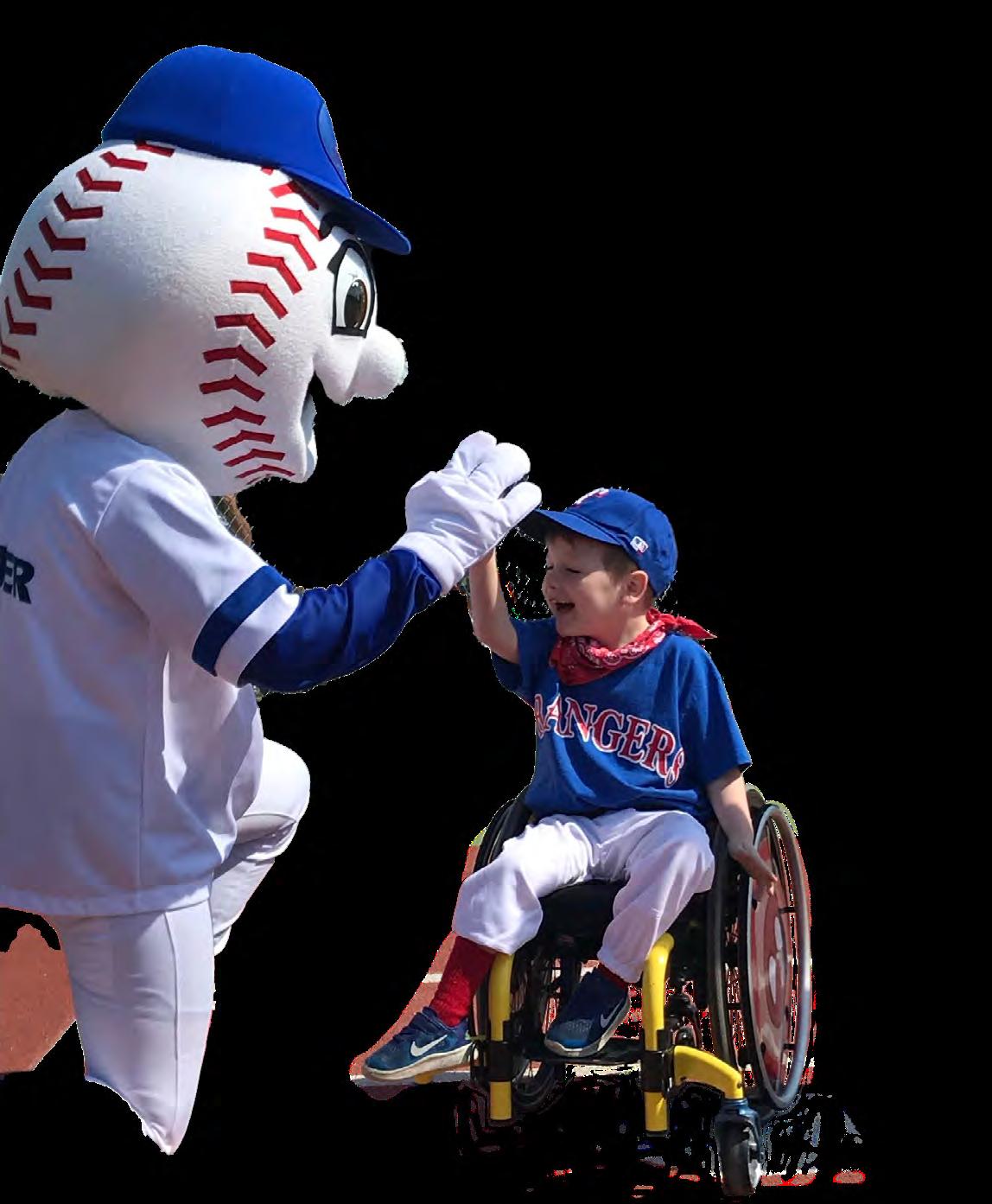

The Tyler Public Library is making books more accessible across the city! In partnership with our Parks Department and First Baptist Church, the Library now restocks six Little Free Libraries in city parks across town, ensuring free books in English and Spanish for all ages. By repurposing withdrawn materials, librarians provide fresh reading options monthly, meeting growing demand. This initiative fosters literacy and learning in every corner of Tyler, making books available to everyone.

Tyler will soon have its first all-inclusive ballfield at Faulkner Park, ensuring that children and adults of all abilities can experience the joy of sports. Designed for accessibility, this new facility is a partnership between Tyler Parks and Recreation and the Miracle League of Tyler to spark joy in the community

More than just a place to play baseball, this field will bring families together. It will be a space where children with disabilities can experience the camaraderie of a team, celebrate victories, and build friendships. Parents who may have felt alone in finding activities for their children will have a place to connect, share experiences, and support one another. A buddy system will also be in place to encourage interactions between children of all abilities, building friendships beyond the field.
This project is deeply personal for Casey and Renae Bryans, who were inspired by their son, Jack. Jack was born with a neuromuscular disorder that progressively limited his mobility, eventually requiring him to use a wheelchair full-time. Despite these challenges, his joy, resilience, and love for baseball never wavered. When Jack could no longer play on traditional fields, his family traveled to another city so he could participate in an accessible league. Realizing that Tyler needed a Miracle League of its own, they partnered with the City and Smith County and a dedicated group of community members to bring this
With its prime location at Faulkner Park, every family who visits will see this field in action—demonstrating that all people - children and adults alike - with special/accessibility needs deserve the chance to play. While most players will be from Tyler, the field is expected to serve families across Smith County and beyond, providing opportunities that previously didn’t exist in the region.
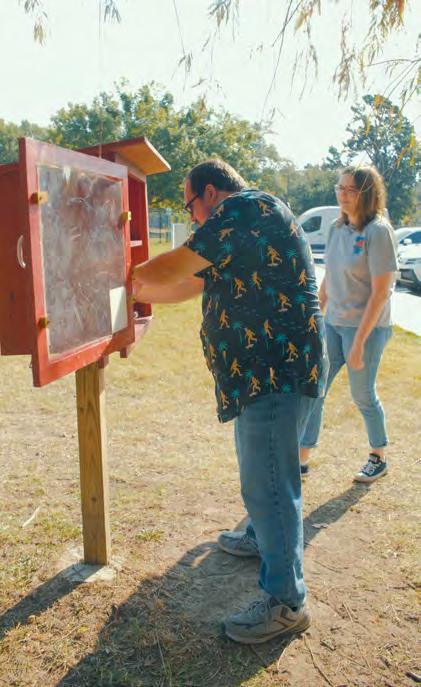

This project was a true community effort. The Miracle League of Tyler contributed more than $1.1 million— funded through generous donations from residents, businesses, and community partners. We supported the project with up to $500,000 from the Half Cent Sales Tax fund and provided the land to give this special field a home. Together, these contributions brought the vision to life
As construction nears completion, we invite everyone to the official ribboncutting ceremony this summer. This celebration will mark a significant step toward a more inclusive Tyler, one where every person has the opportunity to experience the joy of the game, the thrill of teamwork, and the pride of belonging.
